Graduation projects |
||
| Xiaoshi Zhang – Improving communication between caregivers of seniors with a mild cognitive impairment (Nov 2012) at TU Delft. The goal of this project was to design a new communication and collaboration tool for caregivers (both family caregivers and professional home care givers), which aims to reduce caregiver burden, and to improve communication and collaboration between caregivers. The project aimed to find out how family caregivers could more easily involve professional caregivers when needed in a flexible way. Moreover, the project has explored how an organic collaboration between caregivers can be supported by a collaboration tool by increasing awareness of the work distribution and user roles. |
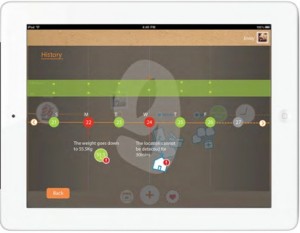
|
|
| Wessel Braakman – Design a toolkit for application designers for developing engaging applications for senior users (Oct 2012). The aim of this project was to create a toolkit that can be used by application developers to develop engaging new products and services aimed at senior users. The project has researched and brought together game elements for this target group and context. An easy-to-use interactive table has been developed which visualizes what game elements can be used in what context. |
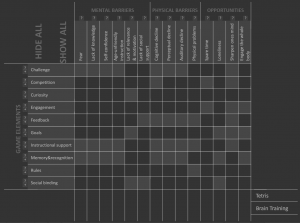
|
|
| Yunpeng Zhao – Asian Home Lighting Experience (Oct 2011) at Philips Shenzhen, China. For Philips Consumer Luminaires (Shenzhen), a home lighting control system was developed for the Chinese urban middle class homes. Extensive user explorations with Chinese target users resulted in the design of a lighting solution that meets the needs and desires of the target users. The project has resulted in a home lighting controller. |
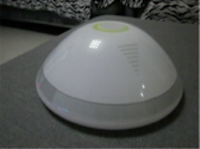 |
|
| Bas Stroomer – CommunityNet: Mediating Care at the Local Community Level (2010). Community care is a key ingredient of succesful independent living. Neighbors, family and friends are generally willing to help each other, but there appear to be barriers towards asking for help. CommunityNet aims to bring together family and friends in a community system, and facilitate the match-making process. A user- centered design process was followed to find a product concept which appeals to the target user group and which addresses the user needs. The concept was evaluated in a field test, which showed success in lowering the barrier towards asking multiple contacts for support. Participants indicated that they preferred using CommunityNet compared to face-to-face contact and telephone when support is not urgent. Since participants indicated problems building their network, the next step will be to integrate an automated mach-maker facility. |
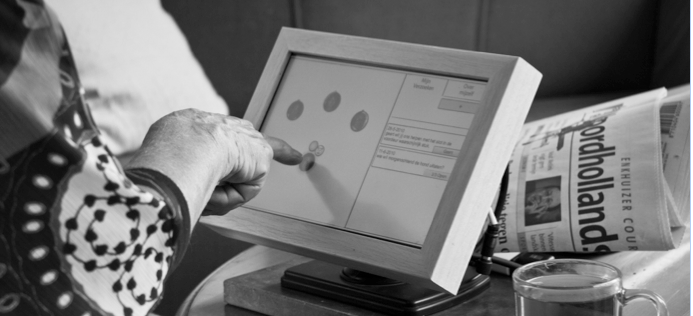 |
|
| Matty Cruijsberg – Designing an awareness display: support awareness and promote peace of mind for the family carer of an independently living senior (April 2010). Senior citizens increasingly like to live independently as long as possible. At a certain point in time, they need support in doing so. This support can be given by professionals but also by family and friends (informal caregivers). Without proper communication tools, it can be hard to remotely judge the situation of people in need of care. This project aims to create a web-interface that enables non-professional care-givers to check the status of people in need of care. For example, a daughter could easily see when her mother is in need of extra care, and act appropriately. |
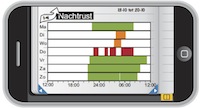 |
|
| Wei Zhang – Active Digital Aura for Balanced Lifestyle Applications (Nov 2009) at Philips. Designing user-central interaction concept(s) in the context of home by applying the ADA technology, after a series of end-user research; and then to evaluate the concept(s) via user tests. The project will focus on the application domain of Well-being Monitoring and Coaching. |
||
| Xu Chen – Together anywhere, together anytime: strategic design for connected lobby to enhance family togetherness by balancing awareness and privacy (Oct 2009) at Philips. This graduation project aims to find a solution which can enhance the feeling of ≥Togetherness≈ while avoiding privacy problems when family members communicate with each other. |
||
| Jorge Peregrin – Ambient telephony – Designing a communication product for social presence in mediated communication at home (April 09) at Philips Research. Creating, testing and developing interaction concepts and forms for the existing Philips Ambient Telephony system. The design concept should be fun to use it, natural, non-intrusive, and fitting the Ambient Lifestyle philosophy of Philips, with a strong focus in achieving a satisfactory social presence between all the parts involved in the communication and keeping a strong focus in the user-product interaction. |
||
| Inaki Merino Albaina – Persuasive activity-aware service for elderly people who need to exercise more (2008). As part of the Independent at Home project, the goal of this project is to create an activity-aware service for the home that stimulates elderly people to improve their physical activity levels. |
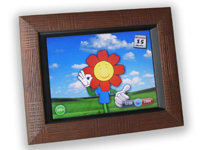 |
|
| Halldor Fjalldal – Ubi-designer: a web-based toolkit for configuring and field-testing UbiComp prototypes (2008). As part of the Independent at Home project, the goal of this project was to create middleware that simplifies the development of activity-aware services for the home. |
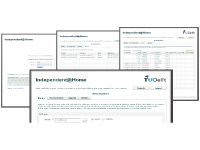 |
|
| Niels Bovendeur – Activity journal (2008). As part of the Independent at Home project, the main goal of this project was to create an easy-to-use activity-labeling interface that enables elderly users to give feedback on an activity-aware system. The design concept was focused on accessibility, understandability and direct feedback, and has been tested in the field with multiple users. |
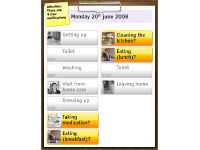 |
|
| Robbert Vroegindeweij – Web-based activity monitor for professional care givers (2008). As part of the Independent at Home project, the main goal of this project was to create a web-based activity monitor for professional care givers. The web interface shows domestic routines of care clients; based on this information, care givers can adapt their work schedule to actual client needs. |
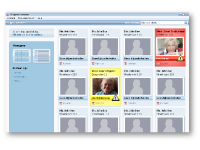 |
|
| Nanda Legerstee – External project: Intuitive web portal for home control (2008) at Home Automation Europe. The project aimed to create an intuitive web portal that can be used by both end users and technicians to setup a home control system. |
||
| Erwin van Veldhoven – Designing an interaction metaphor for an ambient activity-aware service platform for elderly at home (2008). As part of the Independent at Home project, the main focus of the assignment was to study human-product interaction concepts for the activity-aware service platform. An electronic bulletin board has been developed, targeted specifically at the elderly. A prototype has been tested in the field. |
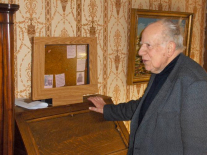 |
|
| Marije Stelwagen – External project: Charting application domains for indoor matrix illumination (2006) at Philips Research. In her Master’s project, Marije has studied possible ways to apply an innovative lighting technology developed by Philips in attractive consumer solutions. |
||
| Katelijne Vandenbussche – Fine-grained indoor localisation using wireless sensor networks (2005). This thesis describes the research on algorithms for wireless sensor networks that are applicable for doing fine-grained localisation in a small indoor environment. The goal of the project is to use the fine-grained location information to recognise the current activities of all people present in a living room. The scalability of existing localisation algorithms, designed for outdoor and large indoor environments, is investigated. |
||
| Wouter Kalis – Building an Intelligent Help System for AdaptIt (2002). The thesis describes the building of an intelligent help system for the AdaptIt tool called the I-advisor. The I-advisor provides the users with context-sensitive support, e.g., by giving detailed help information on the task the user is currently working on. |
||
Other research projects |
||
| Smart Communicator Student projects for the course Interactive Technology Design, Spring 2007. Four groups of two students have developed and tested innovative interaction concepts for a video communication system for the elderly. The smart communicators were context-aware, and automatically adapted the interaction to the state of the environment. |
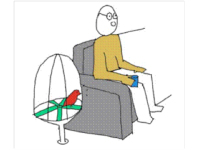 |
|
| A comparision of 3-scale and 7-scale positioning of songs in an atmosphere model Onderzoeksleer project, 2 students, 2005/06. Students compared two mechanisms for adding and positioning music content in an atmosphere model. The 7-scale variant relates closely to how people experience music, the 3-scale variant relates to the system interpretation of music. |
||
| Visualization of a 3D atmosphere model Onderzoeksleer project, 2 students, 2005/06. Students designed and tested a graphical user interface for a 3D home atmosphere model. This interface allowed users to easily build a new model from scratch, and to navigate through the model. A model validation mechanism has been included in the interface. |
||
| Rituals and situations Onderzoeksleer project, 2 students, 2004/05. Goal was to research and describe a possible link between home rituals and home atmospheres. The results have be used to automate the home atmosphere setting in an aware home system. |
||




